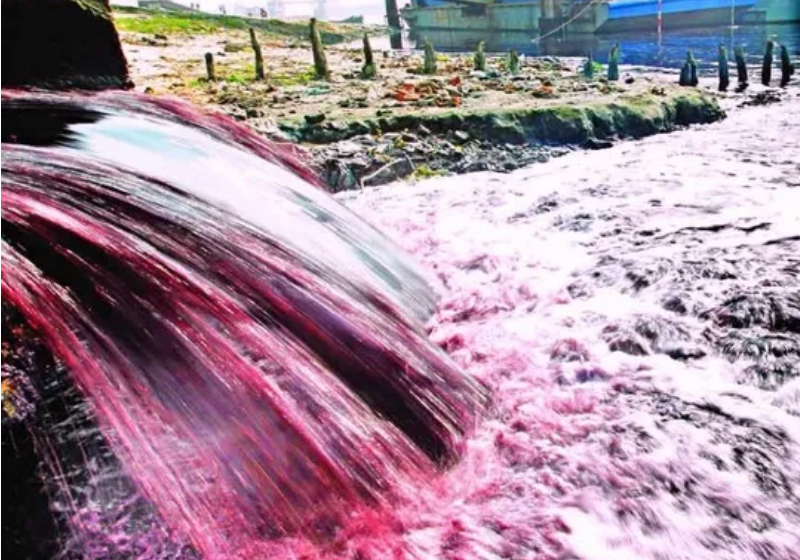Introduction for Dye Processing Wastewater Treatment
Dye industry wastewater refers to the wastewater discharged during the production of dyes and pigments using benzene, toluene, naphthalene, and other raw materials through nitrification and iodization to produce intermediates, followed by diazotization, coupling, and vulcanization reactions.
Wastewater mainly comes from reactors, filters, equipment, and ground cleaning. Due to the wide variety of dyes, pigments, and their intermediates produced, the nature of wastewater varies. Generally, it is divided into acidic wastewater and alkaline wastewater. The wastewater contains acid, alkali, metal salts such as copper and zinc, reductants such as sulfide alkali, oxidants such as sodium chloride, and intermediates.In addition, there are colored suspended solids (100-500mg/L) and dissolved solids (3000-1600mg/L).
The quality of dye production wastewater is complex, and appropriate treatment methods should be selected based on the characteristics of the wastewater and its discharge requirements.
- Coagulation and filtration methods can be used to remove solid impurities and inorganic substances.
- Process consisting of coagulation and adsorption can be used for decolorization.
- Chemical oxidation, biological methods, and reverse osmosis methods are mainly used to remove toxic substances or organic substances.
- Ion exchange method can be used to remove heavy metals.
The commonly used methods for treating dye wastewater are as follows:
Chemical Coagulation Method
Low concentration dye wastewater containing acid, alkali, salt, and organic matter is first subjected to homogenization and precipitation, neutralized by adding an appropriate amount of alkali or acid, and then flocculated and precipitated with coagulants.
Coagulants can be aluminum sulfate, ferrous sulfate, polyaluminum chloride, and polypropylene amide. The treatment effect of flocculation and sedimentation of dye wastewater depends on the selection and dosage of coagulants and coagulant aids, the pH value of the wastewater, and the hydraulic conditions of coagulation.
Chemical coagulation method can generally remove about 70-90% of chromaticity and 50-80% of COD (chemical oxygen demand).
Biological Method
Commonly include activated sludge method, biofilm method, oxidation pond method, and anaerobic biological method.
Biological methods can treat most dye wastewater. Wastewater contains amines, phenols, etc., and biological treatment has a good effect.
Acidic and alkaline wastewater can be neutralized before being treated by biological methods.Azo and sulfide dye wastewater can be first treated by reduction and oxidation to reduce its toxicity, and then treated by biological methods.
Adsorption Method
Adsorbents commonly include activated carbon, activated diatomite, activated coal, activated clay, lignite, and polymeric adsorbent. Generally, granular activated carbon or activated coal is used.
The adsorption capacity of various adsorbents for different types of dye production wastewater is different, that is, the adsorbent has selectivity.
Adsorption method can remove substances that are difficult to decompose from wastewater.For wastewater that is not suitable for biological treatment, or wastewater that cannot meet the discharge standard after biological treatment, adsorption method can be used for treatment. If the concentration of organic matter in wastewater is high, using activated carbon adsorption treatment is not economical.
In addition to the above methods, ion exchange method, reverse osmosis method, extraction method, foam separation method and incineration method can also be used for material recovery and harmless treatment of wastewater.
Visit www.evuchina.com for more informations!



